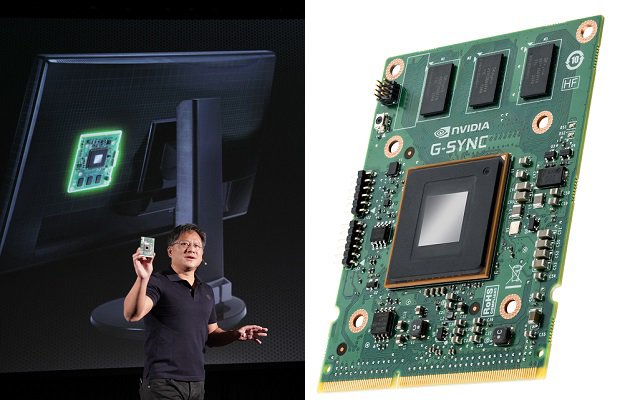Nvidia has announced its new G-Sync technology, a combination of hardware and software which provides smoother gaming experience by controlling the monitor refresh rate.

Since their earliest days, displays have had fixed refresh rates -- typically 60 times a second (hertz). But, due to the dynamic nature of video games, GPUs render frames at varying rates. As the GPU seeks to synchronize with the monitor, persistent tearing occurs. Turning on V-SYNC (or Vertical-SYNC) eliminates tearing but causes increased lag and stutter as the GPU and monitor refresh at different rates.
G-SYNC eliminates this tradeoff. It perfectly syncs the monitor to the GPU, regardless of frame rate, leading to uncompromised PC gaming experiences.
So with G-Sync enabled, the monitor will synchronize itself with the GPU, delaying the refresh until the next frame is received from the graphics card, eliminating tearing.
The G-Sync technology will require a GTX 650 Ti Boost or better GPU and a compatible monitor ( or a G-Sync modding board and compatible monitor ASUS VG248Q ). Asus, BenQ , Philips and ViewSonic will be launching G-Sync enabled monitors starting Q1 2014.
Source

Since their earliest days, displays have had fixed refresh rates -- typically 60 times a second (hertz). But, due to the dynamic nature of video games, GPUs render frames at varying rates. As the GPU seeks to synchronize with the monitor, persistent tearing occurs. Turning on V-SYNC (or Vertical-SYNC) eliminates tearing but causes increased lag and stutter as the GPU and monitor refresh at different rates.
G-SYNC eliminates this tradeoff. It perfectly syncs the monitor to the GPU, regardless of frame rate, leading to uncompromised PC gaming experiences.
So with G-Sync enabled, the monitor will synchronize itself with the GPU, delaying the refresh until the next frame is received from the graphics card, eliminating tearing.
The G-Sync technology will require a GTX 650 Ti Boost or better GPU and a compatible monitor ( or a G-Sync modding board and compatible monitor ASUS VG248Q ). Asus, BenQ , Philips and ViewSonic will be launching G-Sync enabled monitors starting Q1 2014.
Source


